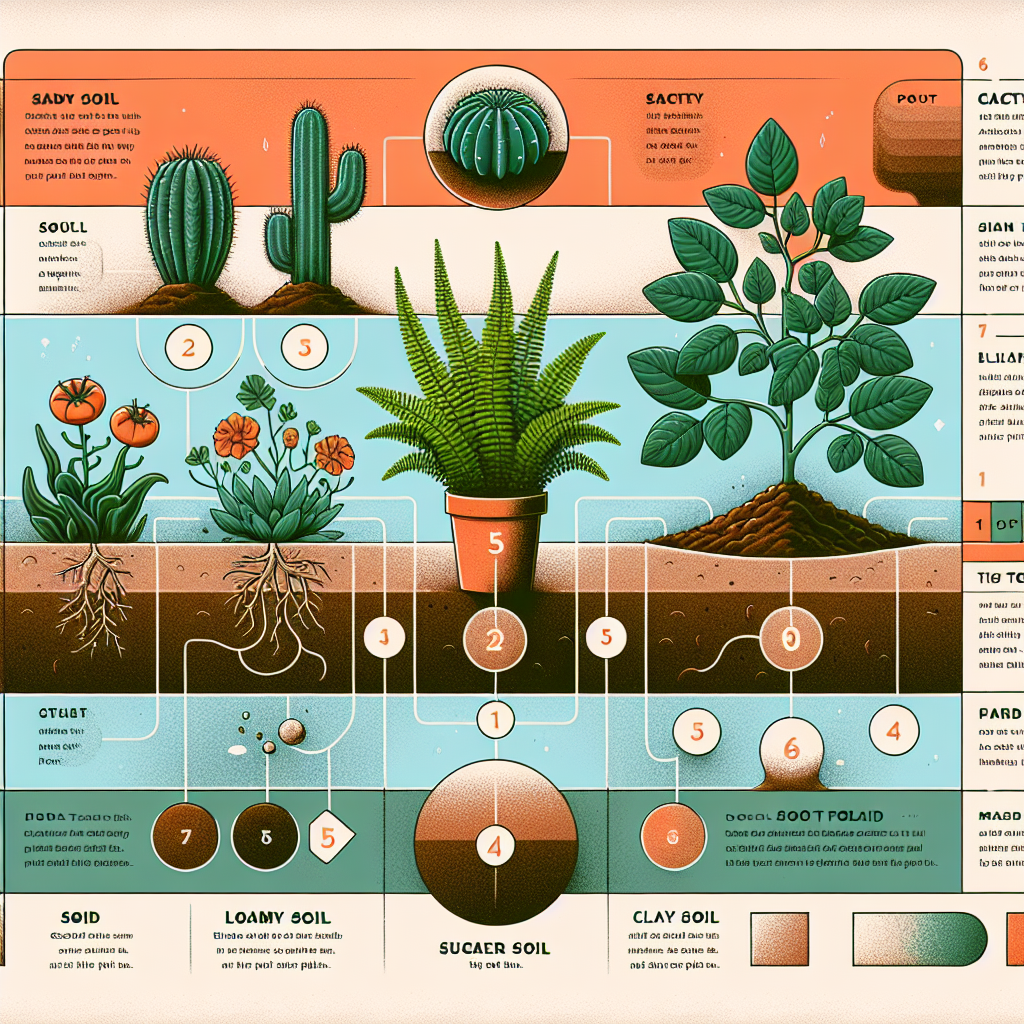Selecting the Right Soil Type for Different Plants
When it comes to creating a vibrant and productive garden, the soil you choose is just as critical as the plants you decide to grow. Not all soil is created equal, and each plant has its own needs that your soil must meet for optimum health and growth. In this article, we’ll delve into the intricacies of various soil types and offer sage advice for pairing them with the right plants, ensuring your garden thrives.
Understanding Soil Types
Before diving into matching, it’s essential to understand that soil types primarily differ in particle size, which influences drainage and nutrient availability. The three main types of soil are sand, silt, and clay, with loam representing a balanced mix of these three.
Sandy soil is comprised of large particles and is known for its high drainage rate. However, it struggles to maintain moisture and nutrients. Silty soil, with medium-sized particles, holds moisture better and is more fertile than sandy soil. Clay soil possesses the smallest particles, retains water the best, and is rich in nutrients, albeit with poor drainage. Loamy soil, the gardener’s gold standard, combines these properties to offer a well-draining yet fertile medium.
Matching Soil Types To Plant Preferences
Succulents and Cacti: A Sandy Situation
Succulents and cacti are native to arid environments and therefore prefer a well-draining soil that mimics their natural habitat. A sandy soil base, with its excellent drainage, is adept at preventing root rot in these drought-tolerant plants. You can augment your garden with a commercially available cactus mix to ensure your desert dwellers are happy.
Root Vegetables: The Silt Advantage
For root vegetables like carrots and beets, soil that is too dense can result in poor root development. Silty soil, with its balance of drainage and nutrient retention, is particularly suited for these types of plants. A soil rich in silt allows roots to expand freely while still providing the moisture and nutrients they crave.
Heavy Feeders: Clay’s Nutrient-Rich Embrace
Heavy feeders like tomatoes and peppers thrive in soils rich with nutrients. Clay soil, which can hold onto nutrients more than other types, can be beneficial. However, its poor drainage requires amendment; by adding organic matter, you can improve aeration and drainage, making clay soil suitable for your robust vegetable crops.
Herbs and Leafy Greens: Loam’s Balanced Approach
Herbs and leafy greens need a soil that provides moisture without waterlogging. Loamy soil strikes the perfect balance. Its mix of sand, silt, and clay creates a fertile, well-drained environment that supports a wide range of garden favorites from basil to spinach. Loam is often considered the best all-purpose garden soil, and for good reason.
Amending Your Soil for Perfection
Sometimes your garden’s natural soil won’t fit the bill. In such cases, soil amendments can bring your existing soil closer to the ideal for your specific plants. Adding organic matter like compost, aged manure, or peat moss can dramatically improve soil structure and fertility.
For sandy soils, incorporating organic matter improves moisture and nutrient retention. Meanwhile, the addition of gypsum or organic matter to clay soils can enhance drainage and prevent compaction.
Testing and Adjusting Soil pH
Beyond type, soil pH is another crucial factor. Most plants prefer a slightly acidic to neutral pH (6.0-7.0), while others like blueberries and azaleas enjoy more acidic soil. Test your soil pH with a home testing kit or through your local cooperative extension service. If adjustments are needed, use lime to raise pH or sulfur to lower it.
Conclusion
Selecting the correct soil type for your garden plants is fundamental to their success. By understanding the unique needs of your plants and the properties of different soils, you can tailor your garden’s soil for optimum health and productivity. Whether you’re amending with organic matter or balancing pH, the effort will result in a bountiful and beautiful garden.
Happy gardening, green thumbs!
Whether you’re a beginner or a seasoned gardener, ensuring the right soil is paramount. For more gardening tips and tricks, be sure to explore other articles in our gardening section. From tackling pests to selecting the perfect plants, we’re here to help your garden flourish.


